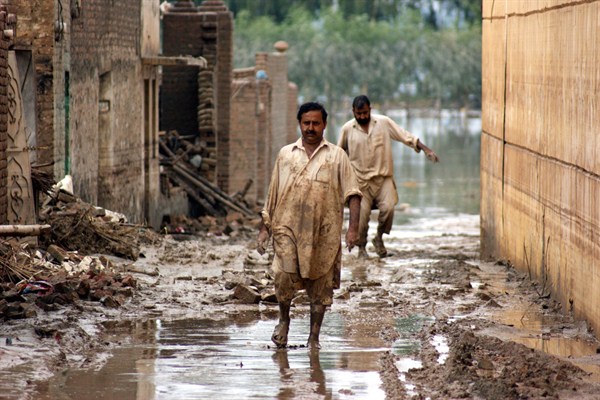This past summer, as if on cue, seasonal floods across Pakistan killed more than 67 people and displaced thousands. For the past five years, Pakistan has experienced unusually severe monsoon rains in the summer. In 2010, flash and riverine floods destroyed 1.6 million homes, killed 2,000 people and displaced approximately 20 million.
While flooding grabs the headlines, extreme heat actually has a greater impact on long-term population dynamics in Pakistan. A recent Nature study found that flooding has “modest to insignificant impacts” on long-term migration, while heat stress “consistently” increases long-term migration levels. The study combined data from a 21-year longitudinal survey of rural Pakistan spanning 1991 to 2012. The findings reveal a strong correlation between heat stress, agricultural income losses and migration. Similar studies in Bangladesh and Indonesia “suggest that the problem is not unique to Pakistan,” says Valerie Mueller, a co-author of the Nature study, in an email interview.
Pakistan is highly vulnerable to climate change, which in the coming years will bring melting glaciers, erratic monsoon rains, heat stress and rising sea levels, among other problems. Each of these will lead to the movement of Pakistanis both within the country and abroad. The Pakistan government hasn’t done enough to prepare. In 2013, it published the first National Climate Change Policy report, which described the economic and environmental impacts of climate change in the country. However, the report included very little discussion of climate change and migration, and no proposed policy solutions to address the links between them, other than to “curb rural-to-urban migration.” A better understanding of these links, however, makes it clear that this is a misguided approach.

